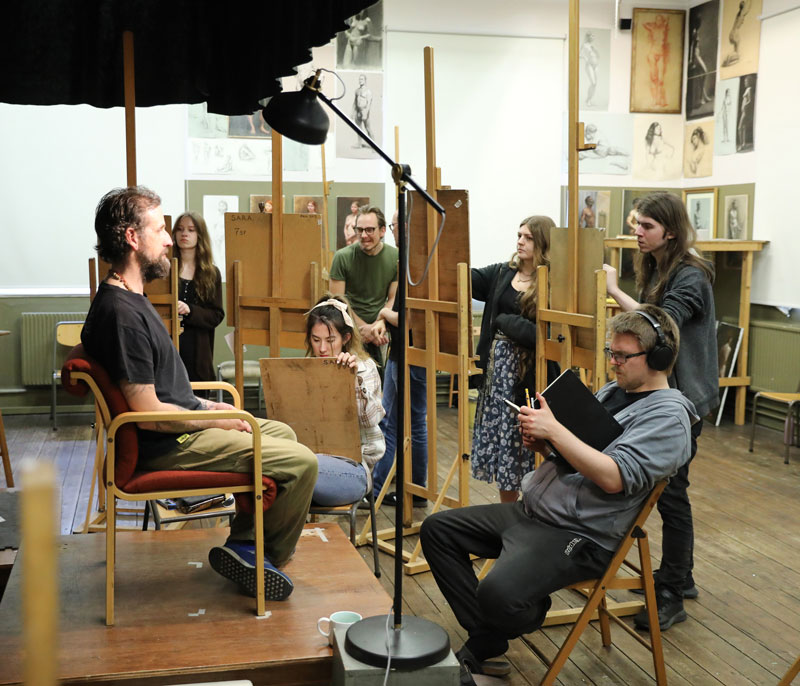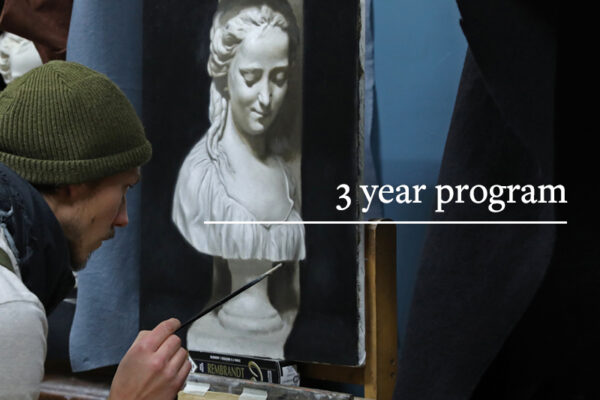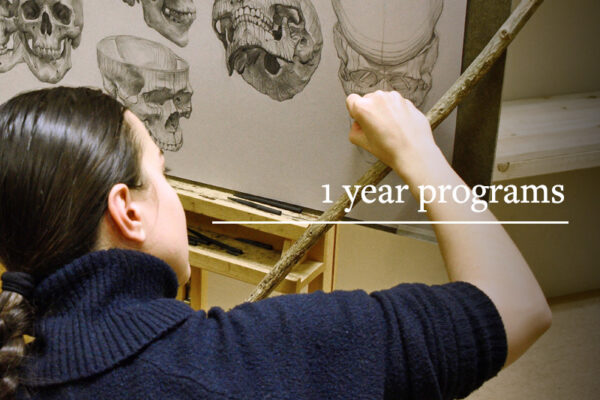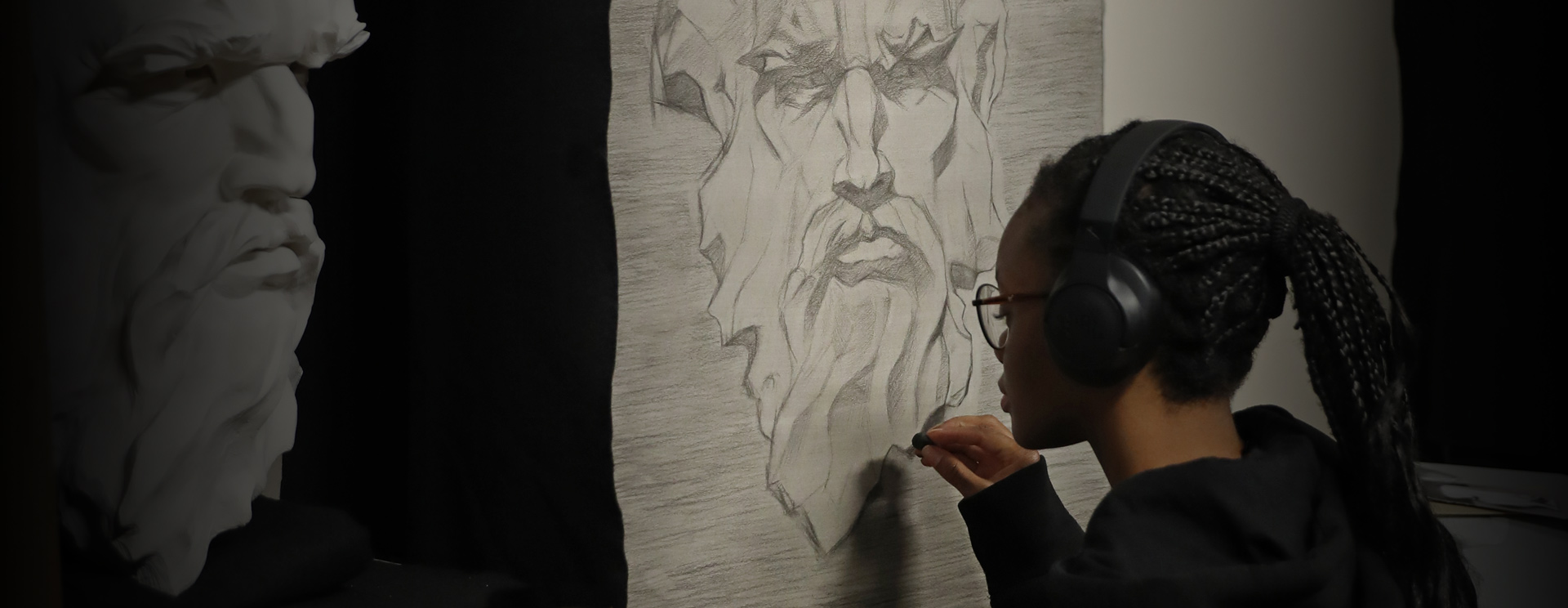SARA’s education and practical training is designed to give students the skills and knowledge necessary to create convincing, realistic works of art that meet the highest standards of excellence and craftsmanship — standards best illustrated within the works of the Old Masters.
The curriculum is based on the best and most effective training techniques used in 19th-century European academies and private ateliers, the apprentice system of the renaissance and our faculty’s own extensive experience both as students and instructors. SARA uses the comparative method of measurement and stresses working only from life and the imagination. The overall result is a rigorous and demanding training program that also offers great flexibility to meet the specific needs of each student to ensure their progress.
Students begin with learning and practicing drawing fundamentals, which include analyzing the subject in order to break it down into its simplest, largest forms and masses, before refining those masses into increasingly more complex forms and details. While drawing, students will consider line weight, edge quality and value relationships that are all part of the overall accuracy they strive for. This is practiced through drawing static models such as master copies and plaster casts, as well as the challenges of somewhat more fluid and dynamic (i.e. changing) models in the figure room.
These intensive and rigorous drawing studies provide the solid foundation upon which the painting program is built beginning in a student’s second year.
Painting studies are also practiced from static and dynamic models, including master copies, plaster casts, still lives and figure models. Painting is begun in monochromatic grisaille (black & white) and brunaille (brown & white), in order to simplify the intimidating challenge of painting in oil. Next, students work in a limited palette, with as few as four colors, before eventually moving on to a full palette with an unlimited choice of colors.
The three years of study are complemented and strengthened through lectures, nearly every week, on art materials, techniques, art history, and the very important, but often ignored aspect of being an artist, which is the business of art. Business lectures touch on such things as résumés, artist statements, gallery contracts, pricing art, marketing, etc., that are essential to a successful career as an artist.
Read more about our methods and philosophy.
“The life of a real artist – is one of constant learning.” This quote, from a successful and world famous painter in his mature years, symbolized my quest for an art school…
Eva Stjernswärd, Sweden



